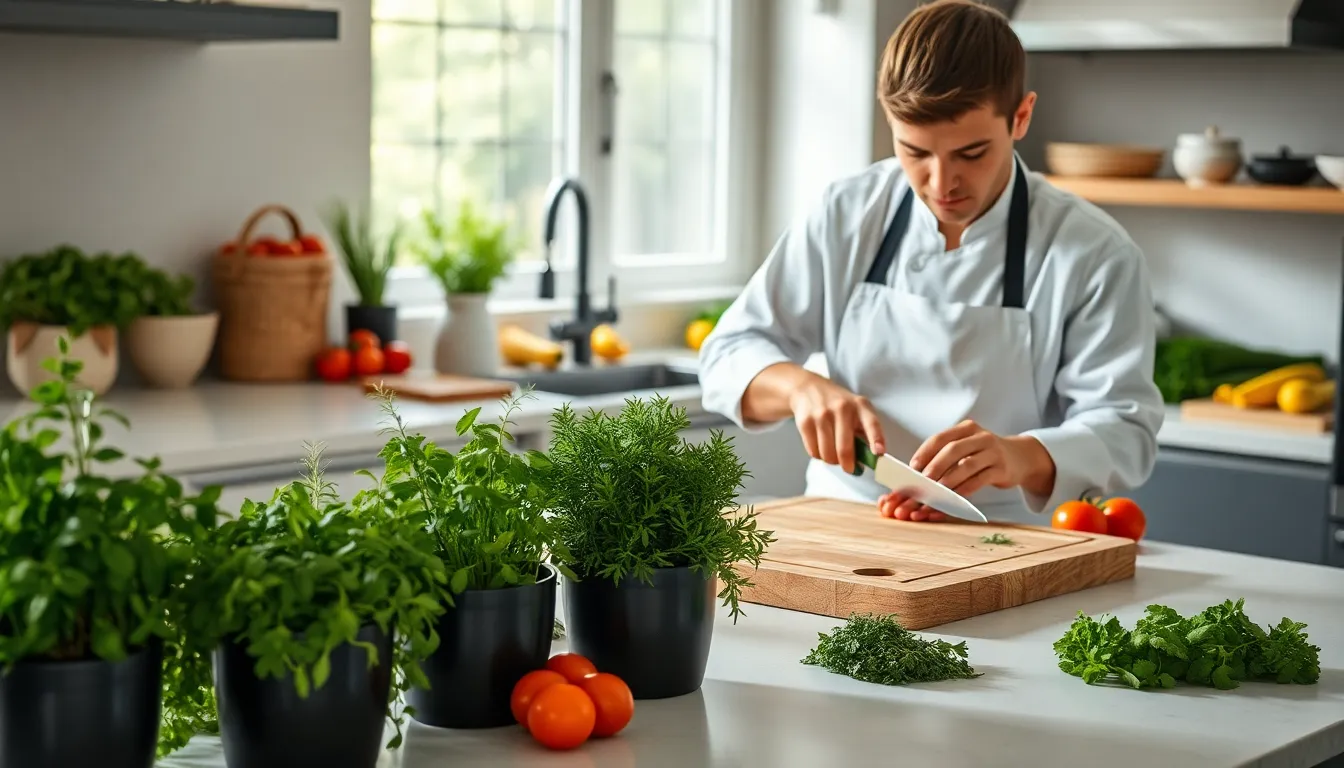Imagine walking into a kitchen filled with the exquisite aromas of freshly chopped herbs, where every dish seems to be kissed by nature. Cooking with fresh herbs not only brightens up any meal but also combats the mundane with vibrant tastes and scents that make your taste buds dance. In this guide, we’ll explore the benefits, key herbs, techniques, and recipes that will have you sprinkling these green wonders on everything from salads to stews. So grab your knife and let’s turn those leafy greens into culinary magic.
Cooking With Fresh Herbs

Enhancing Flavor And Aroma
Fresh herbs are nature’s flavor enhancers, capable of transforming even the blandest dishes into culinary delights. Take basil, for instance. When added to a tomato sauce, it introduces a sweet, aromatic quality that elevates the entire dish. Imagine biting into a perfectly crafted pesto where the vibrant green of basil stands out. Similarly, rosemary adds depth and an earthy aroma to roasted meats and vegetables, making every bite memorable.
Health Benefits
It’s not just about flavor: cooking with fresh herbs has tangible health benefits as well. Many herbs, like parsley and cilantro, are packed with vitamins and antioxidants. They can aid digestion, fight inflammation, and even boost your immune system. Beyond their culinary uses, herbs can enhance your overall well-being, making them a vital addition to not just your dishes but also your lifestyle.
Common Fresh Herbs To Use
Basil: The Sweet Staple
Basil reigns supreme in many kitchens. This sweet, fragrant herb is a must-have for Mediterranean cuisine. Whether fresh on a Caprese salad or blended into sauces, basil’s distinct flavor is unmatched.
Cilantro: A Zesty Addition
Cilantro, with its slightly citrusy flavor, can be a polarizing herb, but its zestiness makes it irreplaceable in dishes like salsa and guacamole. It adds a refreshing twist that can brighten any meal.
Rosemary: Earthy and Robust
Rosemary brings a robust, woodsy flavor that pairs beautifully with roasted meats and potatoes. Its aromatic scent is also known to stimulate the mind, making it a perfect herb to use during gatherings.
Techniques For Using Fresh Herbs
Chopping And Mincing
To release a herb’s full potential, proper chopping and mincing techniques are essential. Start by washing and thoroughly drying the herbs. Then, gather them into a tight bundle and slice through the leaves, creating uniform pieces. Note that the more you chop, the more flavor is released, but be careful not to turn them into mush, it’s all about balance.
Infusing Oils And Vinegars
Herb-infused oils and vinegars can turn mundane dressings and marinades into gourmet creations. To infuse, gently heat your oil over low heat, then add your chosen herbs, allowing them to steep. This process extracts the essential oils, creating a fragrant, flavorful product.
Creating Herb Pastes
Herb pastes are wonderfully versatile. By blending fresh herbs with garlic, nuts, and a bit of olive oil, one can create a delicious paste that can be slathered on meats, stirred into sauces, or spread on bread. It’s a fantastic way to preserve those vibrant flavors.
Incorporating Herbs Into Recipes
Herbs In Salads And Dressings
Fresh herbs can elevate salads from simple to extraordinary. A handful of chopped mint can add freshness to a fruit salad, while a sprinkle of dill can enhance a classic potato salad. Mixing herbs into dressings will infuse your salads with exciting new flavors.
Herbs In Soups And Stews
For soups and stews, fresh herbs provide depth and complexity. Throw in a handful of thyme or bay leaves while simmering for a warm, hearty meal. Removing the herbs at the end ensures that the dish remains light yet flavorful.
Herbs In Main Dishes
Integrating herbs directly into main dishes is where creativity shines. Rub some rosemary on chicken before roasting, or incorporate cilantro in a Thai-inspired curry. The possibilities are endless, and each dish can be a reflection of personal taste.
Preserving Fresh Herbs
Drying Methods
Drying is a classic method to preserve herbs for long-term use. Hang stems in small bunches upside down in a cool, dry place until they are brittle. Once fully dried, crumble them into jars for later use. This method retains much of their flavor and makes them easy to store.
Freezing Techniques
Freezing is another effective technique. Chopping herbs and mixing them with a little olive oil before placing them in ice cube trays can create convenient flavor bombs ready for use. Simply pop a cube into a skillet, and you’ll have instant herb flavor.
Making Herb Oils And Pastes
Creating herb oils and pastes can also help preserve freshness. Herb oils can last for months, while herbed pastes can be kept in the fridge for easy access. This method not only preserves your herbs but also keeps their vibrant flavors intact.

